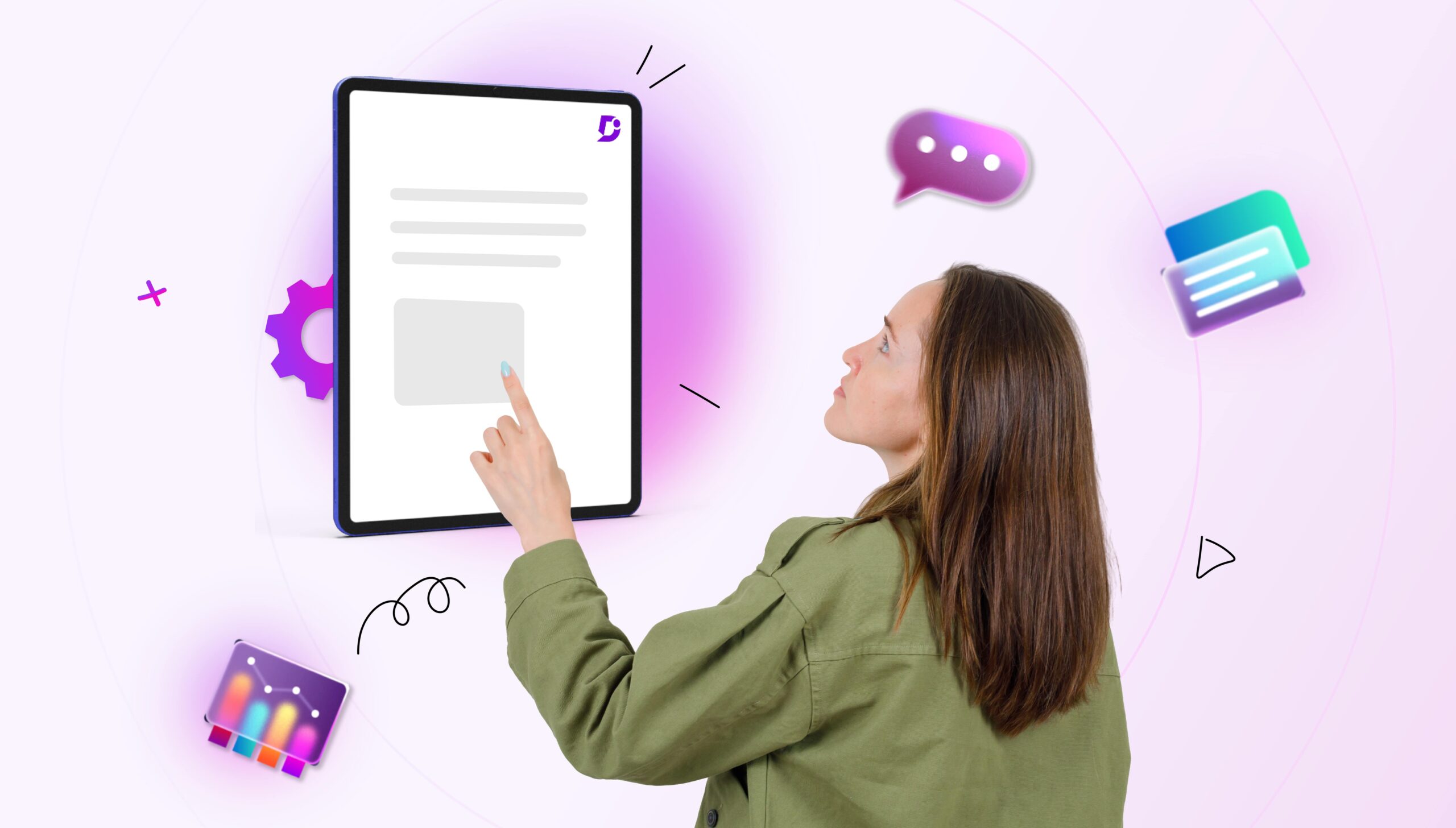Sometimes, one of the challenges with development teams who adhere to the agile methodology is the view that documentation could be a better use of time. And there are indeed instances where documentation requirements can lead to bloated projects and slow responsiveness.
Nevertheless, the whole point of agile is the ability to respond quickly to change, so it’s important to remember that a lack of documentation will ultimately lead to chaos.
A heavy emphasis on collaboration also means that teams who communicate effectively are better positioned to deliver successful software products. In such a rapid pace of development, documenting your requirements and keeping track of change is critical to developing products that meet the customers’ needs.
We will explore why development teams need technical documentation to streamline their activities and generate more revenue. When you’re operating in a remote environment, documentation becomes even more essential for documenting decisions and ensuring the free flow of information.
Communication is critical because ineffective communication and collaboration lead to main workspace failures.
What is Dev Team Communication and Why is it Important?
Development team communication is exchanging information between different team members for effective collaboration. Teams can only work towards a common goal if they are well-practiced in communicating, sharing ideas, explaining decisions, etc.
Dev team communication could include email, instant messages, video conferencing, chat, or face-to-face meetings. What’s critically important is that the outcomes of these interactions be properly documented so that team members can look back on what has been discussed.
Ask more insightful questions
When you ask better questions, you are more likely to elicit open answers that reveal information you might never have heard. The best questions don’t anticipate the response but probe more intensely to get to the heart of the matter. In software development teams, exploring ideas means you can develop more innovative products.
Being able to share and develop your ideas means that teams work together better intensely, and exchanging questions is a big part of that. You can even ask questions about the documentation by commenting on the articles in your knowledge base tool, so the documentation is never static.
Plan more successfully
To move fast, you must be good at planning; creating robust documentation is all part of planning. You can build software products that meet your users’ specifications and needs when you record and document your ideas, decisions, and aims.
Communication happens within the meetings to develop your products and when team members are looking back on what has been done. In agile, you may be tempted to make a change to the software but look back and realize there was a good reason why you didn’t implement that feature in the first place.
Implement agile remotely
As we’ve already touched on, many teams are not only following Agile but also working remotely. Good communication is vital for making this style of working viable as you deal with fast-paced change and the need for face-to-face interaction. Documentation, in particular, can help those who weren’t present when a decision was made stay up-to-date on iterations.
Regular scrum meetings may result in decisions made without certain team members’ presence, so documentation still enables absent team members to participate. Sense checking can be more accessible when there is a document that explains decisions that were taken in meetings.
Improve code reviews
It’s easy to think when you’re writing code that you’ll remember exactly why you made a particular decision, but future-you may end up scratching your head when asked to explain the thinking behind your code. To prepare successfully for code reviews, it’s worth documenting your efforts so you can refer back to them later when asked to account for what you’ve done.
This is especially important when you consider that not all code is immediately self-explanatory. There may have been system requirements that determined your decision to program in a certain way that could be clearer to a reviewer.
Also Read: What is Technical Documentation Software?
Benefits of Technical Documentation for Communication
Considering the importance of dev team communication, we will look more closely at the benefits of technical documentation.
Bridging communication gaps and reducing misunderstandings
When teams are working remotely in an agile model, changes happen fast. Bridging the communication gaps means you can move more swiftly and reduce the potential for misunderstandings. Documentation helps you do this by including team members who could not be part of the decision-making process and enabling you to reflect on your work.
Improving project efficiency, consistency, and scalability
Without technical documentation, you will likely have the same redundant conversations and debate the same points. To improve project efficiency, consistency, and scalability, you need effective documentation to enable the free flow of information. Your team members won’t have to repeat themselves when information has been documented.
Structuring documentation for easy navigation and comprehension
When you use high-performance knowledge base software like Document360, you can ensure your documentation is easy to navigate and comprehend. When the user experience is positive, you can ensure your developers adopt your knowledge base and work from the same playbook.
This is a far superior approach to storing your documentation across different systems, in which case developers would need help knowing where to look first for answers. One system supported by a powerful search is enough to make the documentation experience more viable.
Schedule a demo with one of our experts to take a deeper dive into Document360
Book A Demo
Challenges in Creating Technical Documentation for Communication
Even though it’s clear to see the immense value in technical documentation for development teams, it’s you’ll likely meet a few roadblocks in your haste to document everything.
Addressing resistance to documentation and promoting its value within the team
As we’ve already mentioned, developers may only accept documentation if they see its value within the team. When your high-performing technical team members are pressed for time, they usually write code instead of documenting their activities.
But it’s important to remember that technical documentation can often prevent developers from having to rewrite code because there is transparency and clarity throughout the process. The document once and avoid rework should be your programming approach.
Avoiding excessive documentation that hinders productivity
That being said, there sometimes comes a time when documentation can become a beast all of its own, and developers are spending more time maintaining documentation than implementing productive work.
This can happen when documentation becomes part of the specifications for the project and ceases to be beneficial to anybody. Agile methodologies attempt to combat this pitfall by only documenting what is necessary.
Dealing with outdated or poorly maintained documentation
Documentation becomes more of a hindrance than a help when outdated or poorly maintained. Developers may consult the documentation, but it leads them down the wrong path because it contains inaccurate information that obstructs communication.
The value of a knowledge base tool like Document360 is its versioning feature, in which you can keep track of who has made updates to the documentation and revert to desired versions. This makes it much easier to maintain documentation and keep it relevant.
Balancing documentation efforts with agile development practices
Since the launch of the Agile manifesto, developers have subscribed to this value: “Working software over comprehensive documentation,” which is the second point on the list.
The statement’s true meaning is that working software is more important than comprehensive documentation, but that in no way implies that documentation has no value. It will always have a place as long as documentation supports the agile methodology.
Also Read: How Does Automation Improve Documentation Challenges?Best Practices to Enhance Communication with the Development Team
You can follow these best practices to ensure that you can achieve better communication within your development team.
Encouraging collaboration through shared documentation repositories and version control systems
Firstly, encourage your team to collaborate using a shared documentation repository like a knowledge base. This is a dedicated system for your documentation in which your team will always know they can look if they want to find information about your software.
Version control means you can keep track of changes made so that multiple parties can collaborate on the documentation without fear of conflict. Work is always preserved because you can revert to the previous version. Leveraging documentation as a reference for onboarding new team members.
Onboarding new team members in an agile environment means they must get up to speed fast. There will be little tolerance for newbies who continually ask obvious questions about the software. Still, a great solution to this issue is the presence of thorough documentation as a reference point.
If trainees need clarification on an aspect of the software, they can consult the documentation first and become empowered through their learning. Documentation improves the developer experience through streamlining onboarding.
Using documentation to streamline code reviews and ensure adherence to standards
Documentation that makes the decisions behind your code more explicit enables you to streamline code reviews with less back-and-forth and the ability to create more confidence in your programming. Code reviews are a collaborative process, so involving other reviewers in your decisions through documentation is a great way to respect their time.
Documenting best practices, design decisions, and project-specific guidelines
The best thing about documentation is you can use it to document anything. You can document best practices within your team, explain design decisions, and record project-specific guidelines that ensure every team member is on the same page.
Communication between developers, managers, the design team, and the product team is enhanced when you document important aspects of the project.
Get the developers’ involvement during the planning stage
It may be your product team’s responsibility to develop a great product, but you want to get the developers involved as early as possible so they can tell you what is feasible.
Features that may seem highly desirable for your customers, in theory, may not work in practice, and thorough documentation of the reasoning behind these decisions means your team won’t be going around in circles.
Use effective project management and communication tools
Using the right tools is vitally important if you want project management and communication to be successful. There are a plethora of tools out there for you to choose from, but only certain tools may be right for your business.
The popularity of a tool may not be effective for your developers’ own particular workflows, and choosing the right knowledge base may come down to whether it has certain features that you need for writing useful documentation.
Also Read: Top Technical Documentation KPIs to Track
Check out our video on how to write developer documentation that genuinely helps users, with tips to keep it clear, concise, and audience-focused!
Conclusion
As we have seen, technical documentation is vital for developers who want to ship successful software products. With proper communication, your dev team will experience chaos and likely have the same conversation repeatedly. This could be more productive for the business and customers and save time that could alternatively be spent writing code. If you document your decisions, ideas, best practices, specifications, and more, you are in a better position to work collaboratively. Although the documentation does take a little time to create upfront, it saves time down the road by helping to avoid repetitive conversations and remembering previous decisions.
Tools like Document360 significantly enhance productivity for development teams, helping them to document their software for the benefit of their future selves. No project can be successful if team members aren’t empowered to collaborate with the best possible tools.





 –
– 

